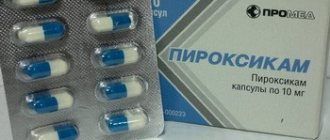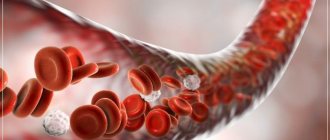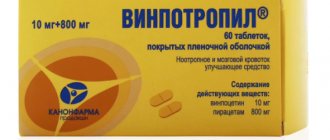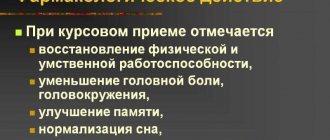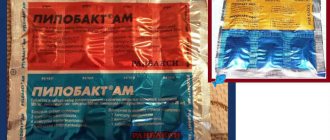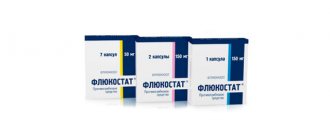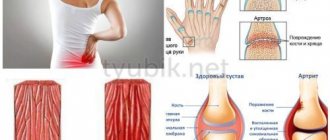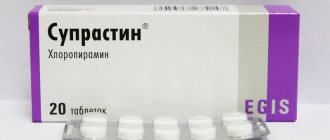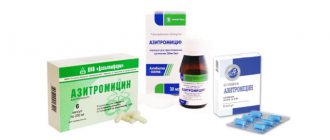Release form and composition of the drug
This medicine is presented in the form of a colorless liquid, which is used for intramuscular and intravenous injections.
This solution is packaged in ampoules of 4 mg each, which are placed in blister packaging and a cardboard box. A pack may contain a different number of ampoules (3 or 5 pcs.). Depending on the packaging, the cost of the medicine will vary.
The main active substance in the solution is anhydrous choline alfoscerate. Sterile water acts as an additional component.
Another dosage form of Cereton is capsules. The main element in their composition is choline alfoscerate. The instructions for the capsules also indicate the content of components such as glycerol, sorbitol, yellow iron oxide, propylparaben, titanium dioxide and methylparaben.
pharmachologic effect
Cereton is a central anticholinergic stimulant containing 40.5% choline with metabolic protection. When it enters the body, this component performs several tasks:
- In the central nervous system, metabolic processes are actively enhanced and blood circulation increases.
- The formation of phosphatidylcholine and acetylcholine is accelerated in neuronal membranes.
- In the affected part of the brain, the linear speed of blood flow increases.
- The phospholipid composition of neuronal membranes is subject to correction, resulting in a decrease in cholinergic activity.
- Synaptic transmission is restored, neuronal membranes acquire plasticity, and receptor functions improve.
- Under physiological conditions, acetylcholine production is stimulated.
- Spatio-temporal indicators of the biological spontaneous functioning of the brain are corrected.
This drug does not have mutagenic or teratogenic effects. It is also unable to influence the reproductive cycle.
When the drug is administered intramuscularly or intravenously, most of the active substance accumulates in the brain, lungs and liver cells. Absorption in this case reaches 88%, which is explained by the ability of the drug to penetrate the blood-brain barrier.
Most of the active substance (about 85%) is excreted from the body through the lungs in the form of carbon dioxide. The elimination process partially involves the kidneys and intestines. About 15% of the drug leaves the body in urine and feces.
In the course of research and practice, Cereton in injections has proven its effectiveness in treating patients with acute illness.
Cereton for hypertension
One ampoule (4 ml of solution) contains 1 gram of the active component choline alfoscerate. Excipient: sterile water.
Each capsule contains 400 mg of active substance. Additional components: yellow iron oxide, water, methylparaben, glycerol, titanium dioxide, propylparaben, sorbitol.
The drug is available in capsule form and as a solution. Each package contains 14 capsules or 3.5 ampoules of 4 ml.
Nootropic. The active substance ensures the supply of choline to brain cells. The active ingredient is protected from enzymatic destruction. Choline is actively used in the process of synthesizing phosphatidylcholine and acetylcholine, normalizing the functioning of affected receptors, increasing the membrane elasticity of neuronal cells, and improving synaptic neuronal transmission.
With sufficient supply of choline to the brain, cerebral blood supply is enhanced, the reticular formation is activated, and cellular metabolism is stimulated. After a course of treatment, regression of severe neurological symptoms is recorded, blood circulation in the affected areas of the brain improves, and cognitive indicators improve. The medicine has a positive effect on the bioelectrical activity of the brain of spontaneous origin.
When administered parenterally at a dose of 10 mg/kg, the active component accumulates in the tissues of the lungs, brain and liver. Absorption rate – 88%. The active substance easily passes through the blood-brain barrier. 15% of metabolites are excreted through the intestines and kidneys; 85% is excreted by lung tissue in the form of carbon dioxide.
- senile pseudomelancholia;
- cognitive impairment;
- attention disorder;
- dementia of unknown origin;
- encephalopathy of unspecified origin;
- cerebral infarction;
- apathy;
- after stroke;
- encephalopathy;
- organic mental disorders;
- behavioral disorders of organic origin (with central nervous system dysfunction);
- senile dementia;
- lack of initiative, decreased motivation;
- lack of coordination;
- after intracranial hemorrhages;
- after brain injuries.
Additional indications for the use of Cereton in the elderly: psychoorganic syndrome, cerebrovascular insufficiency, multi-infarction dementia.
The medication is not prescribed in the acute period of stroke and hemorrhage. Tablets and injections are contraindicated during pregnancy, individual intolerance to choline and auxiliary components, and during lactation. The drug is not used in pediatrics (age limit: 18 years).
Skin:
Digestive tract:
Nervous system:
- dizziness;
- hyperkinesis;
- convulsive syndrome;
- nervousness;
- anxiety;
- aggression;
- drowsiness;
- migraine;
- ischemic changes in brain tissue.
Rarely, urinary disturbances, diarrhea, and pain in the injection area are recorded.
Ampoules are prescribed mainly for acute conditions. The solution is administered intramuscularly or intravenously. Parenteral medication should be administered slowly. Daily dosage – 4 ml (1 ampoule). The duration of treatment is 10-15 days. After acute conditions, capsules are prescribed during the recovery period.
Instructions for use of Cereton tablets
2 pieces in the morning, 1 piece in the evening. Duration of therapy is up to 6 months. For cerebrovascular pathology of chronic origin, for dementia, 1 capsule is prescribed three times a day for a course of 3-6 months. The preferred time of administration is after meals.
Large doses increase the severity of side effects. Adequate syndromic therapy is required.
The pharmacodynamics and pharmacokinetics of the drug do not depend on the use of other drugs. Adsorbents can reduce the effectiveness of Cereton due to adsorption of the active substance.
Dismissal upon presentation of a doctor's prescription form.
Ampoules – 2 years, capsules – 5 years.
To prevent insomnia and overexcitation, it is not recommended to use the medication in the afternoon.
Coincidence in pharmacological effects: Mexidol, Actovegin.
Thematic portals and forums contain positive reviews about Cereton: the drug is well tolerated and has a pronounced nootropic effect.
Reviews from doctors about Cereton: the drug improves cognitive function, helps restore brain function after a stroke or traumatic injury.
Cost of the solution: 3 ampoules - 300 rubles, 5 ampoules - 440 rubles.
Price of Cereton tablets: 800 rubles (28 pieces). In different regions, the price of Cereton varies depending on the pharmacy chain.
The active substance is choline alphoscerate polyhydrate. One ampoule contains 1 g of active ingredient. One capsule contains 400 mg of the active element. The tablets have a yellowish tint and contain an oily liquid that does not have a specific odor.
Excipients in capsules are glycerol and purified water.
The medicine has several medicinal properties:
- Normalizes blood circulation in brain tissues.
- Activates metabolism in the nervous system.
- Restores consciousness in case of neurological disorders.
- Improves the body's cognitive functions.
- Improves memory quality.
- Has a beneficial effect on patient behavior in encephalopathy.
- Normalizes the functionality of receptors.
Improving cerebral circulation is one of the main pharmacological actions of Cereton
- Traumatic brain injury.
- Ischemic stroke.
- Hemorrhagic stroke.
- Psychoorganic syndrome.
- Impaired cognitive function of the body, for example, poor memory, poor concentration, confusion.
- Senile pseudomelancholia.
- Individual intolerance to the components included in the product.
- Acute hemorrhagic stroke. This restriction only applies to taking pills.
- Carrying a baby.
- Breast-feeding.
- Children under 18 years of age. This contraindication is relevant for the use of tablets.
An allergic reaction may manifest as skin rashes and itching
During the rehabilitation period after a stroke or traumatic brain injury, tablets are prescribed. The dosage is 800 mg in the morning and 400 mg in the afternoon. Duration of treatment – 6 months.
Cereton can be combined with any medications, the main thing is to take them as prescribed by your doctor
The product must be stored in a place that is reliably protected from children and exposure to sunlight and humidity. The temperature should be maintained no more than 25 degrees. Capsules can be used for 3 years, and injection solutions for 5 years.
If you need a drug that is much cheaper, then it is better to choose a medication with the same therapeutic effect, but with a different active substance. You should first consult with a specialist.
Cereton: instructions for use and reviews
Latin name: Cereton
ATX code: N07AX02
Active ingredient: choline alfoscerate (Choline alfoscerate)
Update of description and photo: 10/22/2018
Prices in pharmacies: from 186 rubles.
Cereton is a drug with a nootropic effect.
Dosage forms of Cereton:
- solution for intravenous (IV) and intramuscular (IM) administration: clear, colorless liquid (in 4 ml ampoules, in blister packs of 3 or 5 ampoules, in a cardboard box 1 or 2 packages);
- capsules: soft gelatin, oval, yellow or yellow with a light brown tint; The capsules contain a clear, oily, colorless or slightly colored liquid (14 pieces each in blister and cell-free packages, 1–4 packages in a cardboard pack).
Composition of 1 ml Cereton solution:
- active substance: anhydrous choline alfoscerate – 250 mg (in the form of choline alfoscerate polyhydrate);
- auxiliary component: water for injection – up to 1 ml.
Composition of 1 capsule Cereton:
- active substance: choline alfoscerate – 400 mg (calculated as 100% substance);
- auxiliary components: glycerol – 50 mg; purified water - in sufficient quantities to obtain a content weight of 590 mg;
- shell: propyl parahydroxybenzoate, gelatin, glycerol, sorbitol, methyl parahydroxybenzoate, titanium dioxide, yellow iron oxide dye, purified water.
Cereton is one of the nootropic drugs. It is a centrally acting cholinomimetic, which contains 40.5% metabolically protected choline.
Metabolic protection promotes the release of choline in the brain. The drug has a positive effect on the behavioral and cognitive reactions of patients with vascular diseases of the brain (dyscirculatory encephalopathy, residual effects of cerebrovascular accidents), promotes regression of focal neurological symptoms and restoration of consciousness, has a preventive and corrective effect on the pathogenetic factors of involutional psychoorganic syndrome.
Other effects of Cereton:
- ensuring the synthesis of phosphatidylcholine and acetylcholine in neuronal membranes;
- improving blood flow and enhancing metabolic processes in the central nervous system;
- activation of the reticular formation;
- an increase in the linear velocity of blood flow on the side of the traumatic brain injury;
- normalization of the spatiotemporal characteristics of spontaneous bioelectrical activity of the brain;
- changes in the phospholipid composition of neuronal membranes and a decrease in cholinergic activity;
- stimulation of dose-dependent release of acetylcholine under physiological conditions;
- improvement of synaptic transmission, plasticity of neuronal membranes, receptor function (due to participation in the synthesis of phosphatidylcholine - a membrane phospholipid).
Does not affect the reproductive cycle and does not have mutagenic or teratogenic effects.
Absorption when administered parenterally is 88%, easily penetrates the blood-brain barrier (concentration in the brain after oral administration is 45% of the plasma concentration). Accumulates mainly in the liver, brain and lungs.
85% of the drug is excreted by the lungs in the form of carbon dioxide, the rest of the substance is excreted through the intestines and kidneys.
- psychoorganic syndrome that occurs with involutional and degenerative changes in the brain;
- recovery/acute period of ischemic stroke and severe traumatic brain injury, recovery period of hemorrhagic stroke, which occurs with focal hemispheric symptoms or symptoms of brain stem damage;
- senile pseudomelancholia;
- cognitive disorders, including memory impairment, mental function, disorientation, confusion, decreased motivation, ability to concentrate and initiative, including encephalopathy and dementia.
- acute stage of hemorrhagic stroke;
- age under 18 years;
- pregnancy and lactation;
- individual intolerance to the components of the drug.
- acute conditions (solution): deep IM (slow) or IV (slow); 1 ampoule per day for 10–15 days;
- recovery period after traumatic brain injury, hemorrhagic/ischemic stroke (capsules): orally; 800 mg in the morning and 400 mg in the afternoon for a course of 6 months;
- chronic cerebrovascular insufficiency and dementia syndrome (capsules): orally (preferably after meals); 3 times a day, 400 mg for a course of 3–6 months.
Nausea may develop (mainly due to dopaminergic activation). In this case, discontinuation of Cereton is not required; a temporary dose reduction is indicated.
Allergic reactions may also develop.
Additionally for the solution:
- nervous system: aggressiveness, headache, insomnia, drowsiness, anxiety, dizziness, nervousness, convulsions, cerebral ischemia;
- digestive system: pharyngitis, constipation, dry oral mucosa, diarrhea;
- skin: urticaria, rash;
- others: increased urination, pain at the injection site.
The main symptom of overdose is nausea. In these cases, symptomatic treatment is carried out.
According to the instructions, Cereton is not prescribed during pregnancy and lactation.
Age under 18 years is a contraindication to therapy due to the lack of data confirming the safety/efficacy of the drug.
No clinically significant interactions of Cereton with other drugs/substances have been identified.
Store in a place protected from light at temperatures up to 25 °C. Keep away from children.
- capsules – 3 years;
- solution - 5 years.
Dispensed by prescription.
According to reviews, Cereton is an effective drug, relatively inexpensive among analogues. Many note that when administered intramuscularly and intravenously, it can lead to the development of side effects, including drowsiness. Among the disadvantages of Cereton capsules, their large size is indicated. Also, in some cases, the drug does not have the expected therapeutic effect.
Approximate price for Cereton:
- solution (3, 5 or 10 ampoules per package) – 265–365, 483–577 or 572–577 rubles;
- capsules (14 or 28 pieces per package) – 436–580 or 900–1022 rubles.
Indications and contraindications for use
Cereton is prescribed to adults in the following cases:
- psychoorganic syndrome, which accompanies involutional and degenerative changes in the brain;
- consequences of severe traumatic brain injury (prescribed during the recovery period);
- hemorrhagic stroke, in which symptoms of brain stem damage occur (discharged during the rehabilitation period);
- signs of senile pseudomelancholy;
- a number of cognitive disorders - including confusion, decreased motivation, concentration, memory impairment, etc.
Before prescribing the drug, the doctor must make sure there are no contraindications. Taking Cereton is not recommended for:
- individual sensitivity to the active substance;
- hemorrhagic stroke (during the acute stage);
- pregnancy and lactation;
- patients in childhood and adolescence under 18 years of age.
Indications
Cereton is indicated for many neurological diseases:
- Consequences of TBI (both mild, for example, a concussion, and more severe, for example, brain contusion, diffuse axonal damage). Particularly effective for stem lesions.
- Psychoorganic syndrome of various origins.
- Cognitive disorders of various origins, including dyscirculatory encephalopathy, encephalopathy of combined origin.
- Senile pseudomelancholic states.
Side effects and overdose
The drug is well tolerated. When using the drug, adverse reactions rarely occur, but the possibility of their occurrence should not be completely excluded. Symptoms can appear in different systems and organs:
- Digestive system. Patients may experience extreme thirst and dry mouth. In some cases, nausea, indigestion and inflammation of the mucous membranes of the pharynx and mouth may occur.
- CNS. From the nervous system, the most common symptoms include restlessness, sleep problems (insomnia), headaches and anxiety. Depression, convulsions, tearfulness and tremors of the limbs appear less frequently.
- Skin. After taking the medicine, redness, hives and a rash accompanied by itching may appear.
- Angioedema is extremely rare.
- Local reactions. Hematomas, painful infiltrates, and soft tissue swelling may occur in the injection area.
If the patient notices the occurrence of one of the above side effects, you should consult your doctor. Based on these data, a decision will be made to adjust the course of treatment.
If the recommended dose is followed, the risk of overdose is unlikely. If the prescribed dose is exceeded, the patient may experience symptoms similar to side effects. This:
- attacks of nausea and vomiting;
- signs of tachycardia;
- feeling of disorientation in space.
If an excess dosage is detected, emergency assistance must be called. To normalize the patient's condition, symptomatic treatment is prescribed. Further use of Cereton is discontinued.
Side effects
Nausea may develop (mainly due to dopaminergic activation). In this case, discontinuation of Cereton is not required; a temporary dose reduction is indicated.
Allergic reactions may also develop.
Additionally for the solution:
- nervous system: aggressiveness, headache, insomnia, drowsiness, anxiety, dizziness, nervousness, convulsions, cerebral ischemia;
- digestive system: pharyngitis, constipation, dry oral mucosa, diarrhea;
- skin: urticaria, rash;
- others: increased urination, pain at the injection site.
special instructions
When treating older people, no dosage adjustment of Cereton is required - patients are prescribed a standard dose.
If a patient has severe renal or liver failure, this nootropic drug must be prescribed with extreme caution. The medicine is taken with regular medical supervision.
Choline alfoscerate is not able to influence psychomotor function, so during the treatment period the patient can drive vehicles and play sports.
Doctors note that while taking this anticholinergic stimulant you should not drink alcoholic beverages. Interaction with ethanol can negatively affect the patient's condition. On the one hand, the effect of the medication can be neutralized, so there will be no medicinal effect. On the other hand, the risk of developing adverse reactions increases.
Use during pregnancy and lactation
During the period of gestation, women are not prescribed Cereton injections, since the active substance can negatively affect the health and development of the fetus.
Treatment is not recommended during breastfeeding, since a small amount of the medication can pass into the mother's milk and enter the baby's body. If it is impossible to postpone therapy, then lactation is recommended to be interrupted.
Use in childhood
Children and adolescents between 0 and 18 years of age should not take choline alfoscerate. This is explained by the fact that there is no medical data on the effect of this drug on the child’s body. To avoid unpleasant consequences, Cereton injections are contraindicated.
Interaction of the drug with other drugs
Before taking this anticholinergic stimulant, you should take into account its compatibility with other medications:
- Sedatives or antidepressants. Simultaneous use most often leads to an increase in the sedative effect of the former. For this reason, such complex therapy should be abandoned or the dosage adjusted.
- Other drugs from the group of nootropics (including in tablet form). Cereton is a nootropic substance, so its combined use with other drugs in this group most often causes adverse reactions and overdose.
- Tablets for arterial hypertension. With a simultaneous course of these medications, the risk of side effects that affect the nervous system increases sharply. If complex treatment is necessary, the dose is adjusted.
Conditions of release and storage
This medicine can be purchased in pharmacies only with a prescription.
The packaging with ampoules should be stored in a place reliably protected from direct exposure to sunlight. The ambient temperature should not exceed +20°C. If the recommended storage conditions are observed, the shelf life of the drug is 24 months. The date of manufacture is marked on the packaging. If the expiration date has already expired, it is strictly not recommended to use this medication. The ampoules are disposed of.
The manufacturer emphasizes that the solution contained in the ampoules is sterile. For administration, you need to use only the liquid that was in a tightly closed container. Damaged ampoules cannot be used.
It is also forbidden to store an open ampoule - the solution is used for injection immediately after opening.
Cereton
Active substance:
Choline alfoscerate*
Pharmgroup:
Nootropics
Average price in pharmacies
| Name | Manufacturer | average price |
| Cereton 0.25/ml 4ml n3 amp solution i.v. i.m. | Pharm, JSC | 337.00 |
| Cereton 0.25/ml 4ml n5 amp solution i.v. i.m. | Pharm, JSC | 560.00 |
| Cereton 0.4 n14 caps | Pharm, JSC | 510.00 |
| Cereton 0.4 n28 caps | Pharm, JSC | 1000.00 |
| Cereton 0.4 n56 caps | Pharm, JSC | 1466.00 |
Analogs for the active substance:Gleatser Gliatilin Glycerylphosphorylcholine hydrate LIPOID GPC 85 F Nooholin Rompharm FOSAL GFC 85 Choline alphoscerate hydrate Holitylin Cerepro | Application area:Indifference Lack of initiative External signs of aging Age-related eye disease Age-related visual impairment Age-related vascular diseases Age-related constipation Age-related changes in visual acuity Age-related involutional changes in the brain Age disorders Age-related hearing loss Secondary disorders of mnestic functions Lethargic state Sluggish state Subdural hematoma Epidural hematoma Hemorrhagic stroke Gerontological practice Hyperkinetic impulsive syndrome Disorientation Senile dementia Attention deficit Attention deficit in children Calcium and vitamin D3 deficiency in the elderly Lack of drive and motivation Diseases of the brain of a vascular and age-related nature Forgetfulness Difficulty concentrating Difficulty concentrating Difficulty in mental functioning Involutional depression Involutional depressions Apoplectic stroke Hemorrhagic stroke Ischemic stroke Intellectual disability Intellectual-mnestic disorder Intellectual-mnestic disorder Mental infantilism Ischemic brain disease Ischemic brain lesions Ischemic stroke Ischemic stroke and its consequences Ischemic cerebral stroke Ischemic cerebrovascular accident Ischemic brain damage Ischemic brain damage Ischemic condition Cerebral ischemia Cognitive impairment in degenerative and vascular diseases of the brain Cognitive impairment in neurotic disorders Cognitive disorder Cognitive impairment Cognitive disorders Decreased concentration Correction of metabolism in old and senile age Brain hemorrhage Intracerebral hemorrhage Intracerebral hemorrhages Brain injury Brain injuries Attention disorder Attention disorder with hyperactivity Memory impairment Intellectual impairment Cognitive impairment Impaired concentration Impaired concentration ability Violation of mnestic functions Violation of mental activity Thinking disorder Memory impairment Mental disturbance Impaired consciousness Impaired consciousness of toxic origin Disturbance of consciousness of traumatic origin Impaired ability to concentrate Impaired ability to concentrate Impaired mental performance Attention disorders Impaired thinking function Thinking disorders Memory disorders Inability to concentrate Malnutrition in old and old age. Weakening of attention Weakening intellectual productivity Memory loss Weakened ability to concentrate Acute brain hypoxia Acute cerebral ischemia Acute ischemic cerebrovascular accident Acute cerebral infarction Acute ischemic stroke Acute period of ischemic stroke Mental retardation Lack of initiative Lack of emotionality and withdrawal from communication Focal cerebral ischemia Feeling of little value Memory decline Primary disorders of mnestic functions Previous hemorrhagic stroke |
Analogues (very briefly)
Cereton has a number of analogues that can replace this drug. First of all, we should mention Cereton, produced in capsules. It contains the same active component choline alfoscerate, but must be taken orally (orally).
Substitutes for injection are considered:
- Delecite solution;
- Gleatser (available in the form of a solution);
- Nooholin Rompharm;
- Cerepro in ampoules;
- Choline alfoscerate solution.
Despite the fact that these medications have a similar effect, it is strictly not recommended to replace one drug with another on your own. The fact is that each of these nootropics has its own side effects and contraindications. In addition, accurate dosage calculation is required. Therefore, only a doctor should make a prescription.


